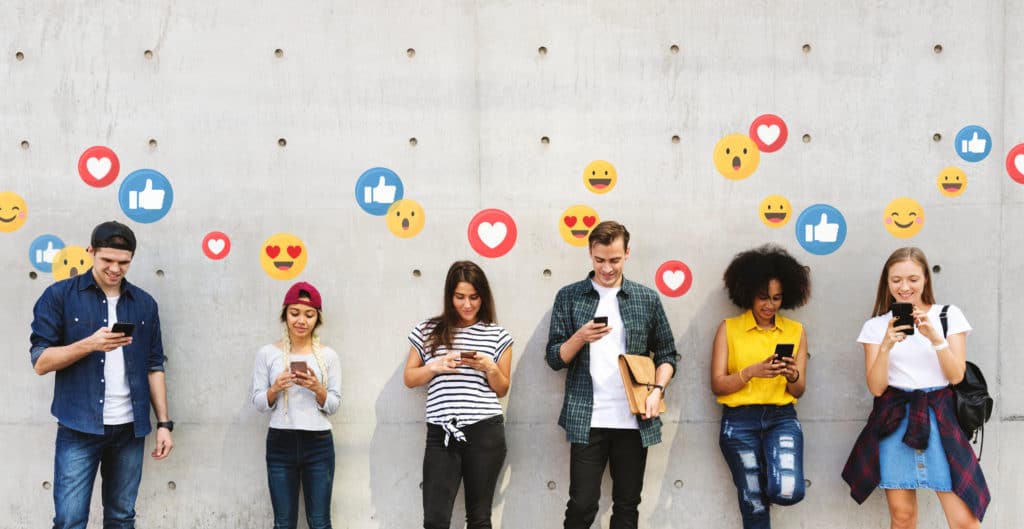For Gen Z, beauty is having a moment. This generation of new shoppers is initiating a self-affirming divorce from the traditional glossy, full-face, unattainable beauty standards that have dominated beauty advertising and marketing for decades.
Beauty has moved on from the days of imperfection-covering layers of foundation and a perfect brow – now, teens are parting with their money for brands that promote a more natural, ‘be your best self’ look. It’s all about embracing and celebrating individuality and what makes you, ‘you’.
Listen to Your Audience
For brands looking to target this questioning generation, the key is to listen. The backlash from Gen Z shoppers to the flawless look has forced brands to think differently about how they communicate with a new generation of buyers.
Gen Z demands more from their brands than just a product that does what it promises on the packaging. They want their brands to embrace their values and passions, and encourage them to engage and start conversations. The purchasing of beauty products no longer ends with the transaction, but grows and thrives through a shopper’s other connections. In this way, community has become an important aspect of brand building.
Growing Your Beauty Brand with Gen Z Shoppers
Gen Z shoppers take a different approach to beauty brands – they’re unafraid to try new trends and can be fickle in the brands they buy. Customer retention with Gen Z buyers can be difficult as trends and fashions wax and wane.
Gen Z are also more aware of where their products come from – they want a brand to have a purpose, an ethos and a personality. These shoppers want to feel like they are part of the conversation, not just being sold to from a faceless corporation.
Sell the Lifestyle as Well as Your Product
The benefits of your products are still important, but so is the lifestyle you’re selling. There are also more considerations that need to be given to how a product is made – is it vegan friendly, are you using recycled elements for your packaging, do you offer a refill service? All of these elements are crucial to forming your whole brand experience – as well as forming potential viral content for your social media.
When makeup and beauty is becoming more ‘self-accepting’, the way you communicate your brand needs to change as well. As we’ve mentioned, Gen Z shoppers are embracing their freckles, skin types and natural ‘flaws’ and expect beauty and make-up to reflect that.
But remember, whether you’re posting content yourself or using influencers, you should only share claims your products have proven they achieve. Read our blog on compliance to learn more.
The rise of ‘hybrid’ makeup attests to this, where skincare ingredients are being included in traditional makeup products, such as moisturizer in concealers and tinted skincare products. To read more into the rise of social shopping, head over to our blog.
How Beauty Influencers Can Help Your Brand Grow with Gen Z
Driven by the rise of influencer marketing, Gen Z shoppers are embracing brands that lead with messaging that says, finally, it’s okay to look like you – and not like this year’s latest top celebrity.
Gen Z lives in a world where they make purchasing decisions and follow trends through peers – they are having a conversation with themselves about what’s cool and what’s not, and what they expect from their beauty brands.
These digital creators have followers who trust their reviews and recommendations implicitly – when one of these influencers advocates a particular product, that brand can see a meteoric rise in sales overnight. The positive impact the right influencer can have on a brand’s advertising and growth on social media cannot be overstated.
Younger shoppers don’t want to have products pushed on them by celebrities who are being paid to advertise to them – they don’t feel like it’s genuine and are less likely to trust the messaging they are being given. A more effective brand growth strategy can be found in reaching out to micro-influencers.
Micro-influencers on platforms such as TikTok and Instagram are trusted by their peers, who Gen Z shoppers view more as friends.
An Exciting New Era of Growth for Beauty Brands
It’s both an exciting and challenging time for beauty brands as a new generation of shoppers begins to interact with established and growing brands. With new opportunities to grow your brand organically through your customers themselves, consumers have a certain amount of power over advertising.
For growing beauty brands looking to tap into the firepower of Gen Z, it’s vital to have a strong purpose, an ethos that can be celebrated and that starts conversations so that consumers can see exactly where a brand fits into their lives. Within the ever-evolving world of social media, there are so many touchpoints to consider, but in all of them authenticity is key.
Find out more tips from BRANDED on brand building and boosting your growth strategy here.





